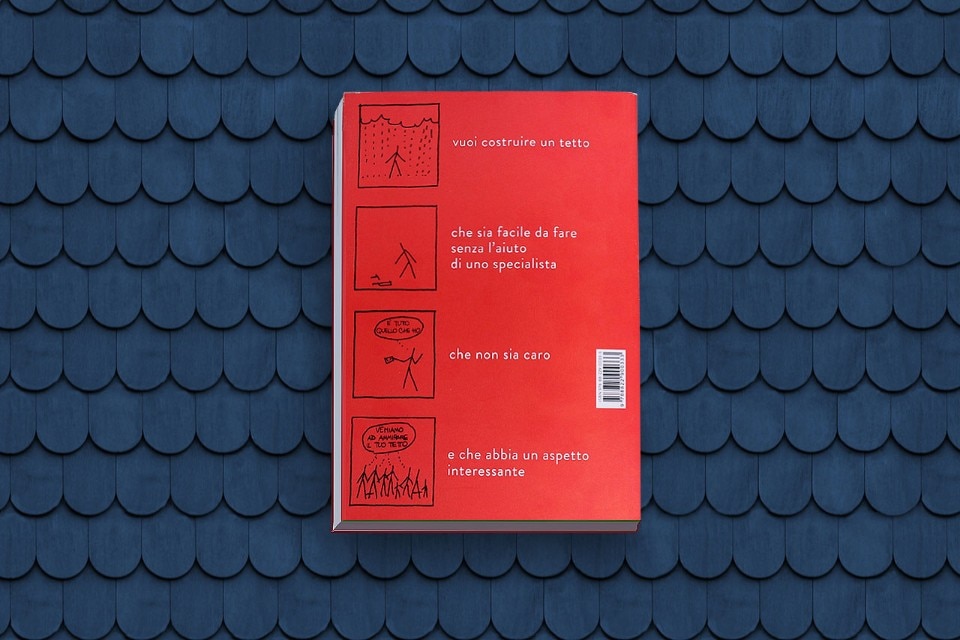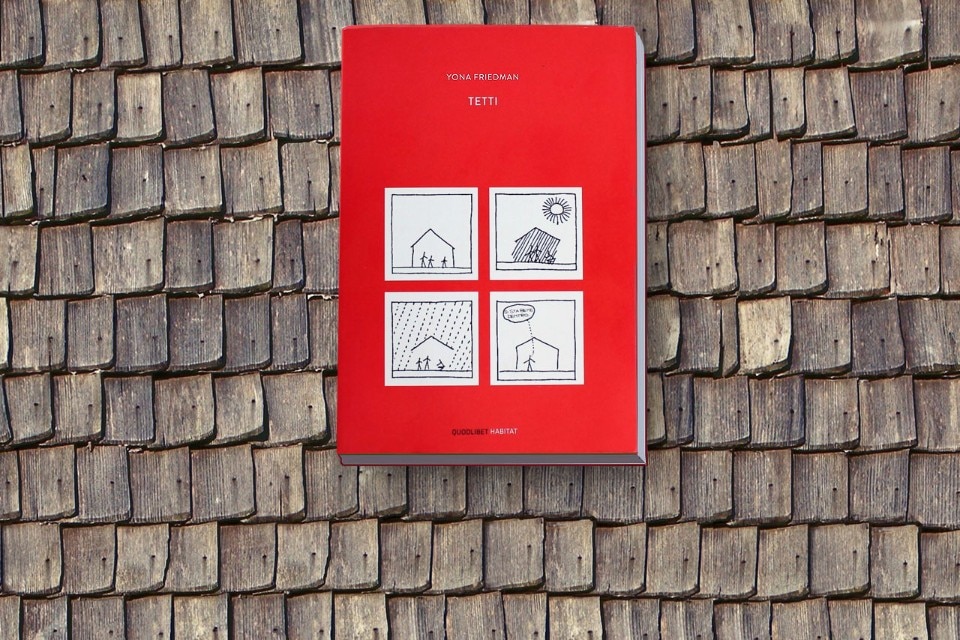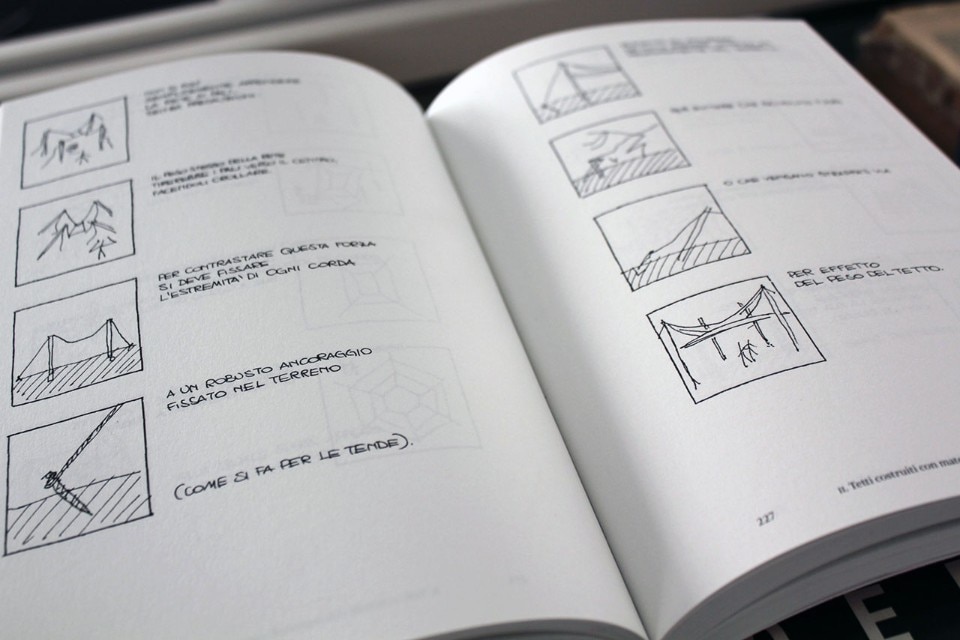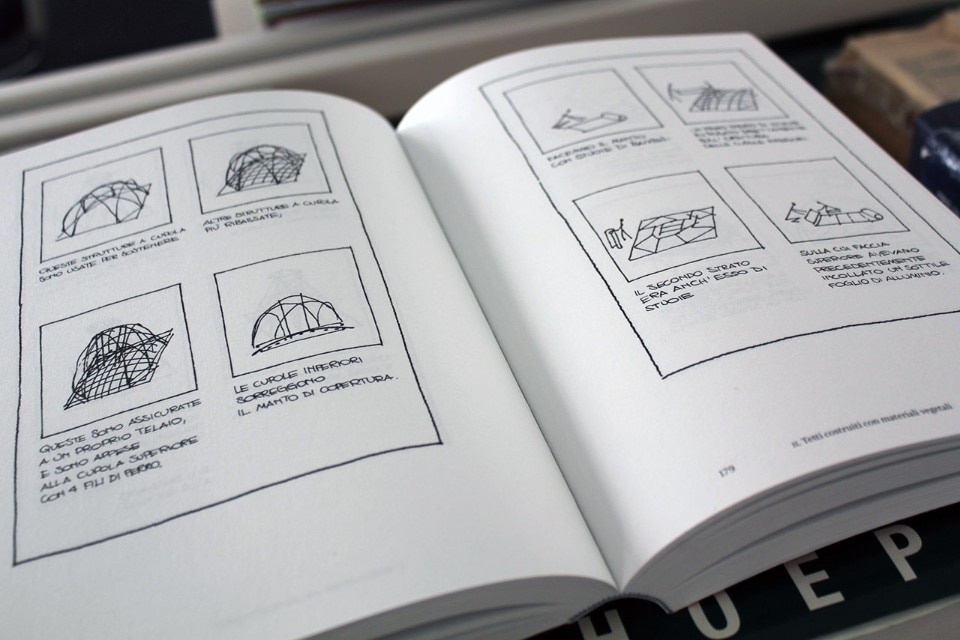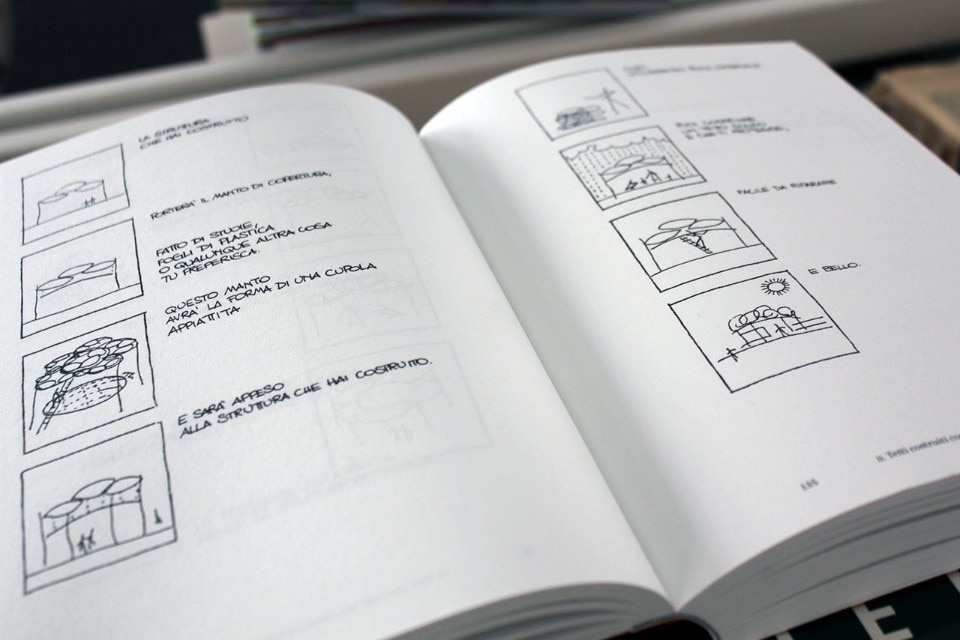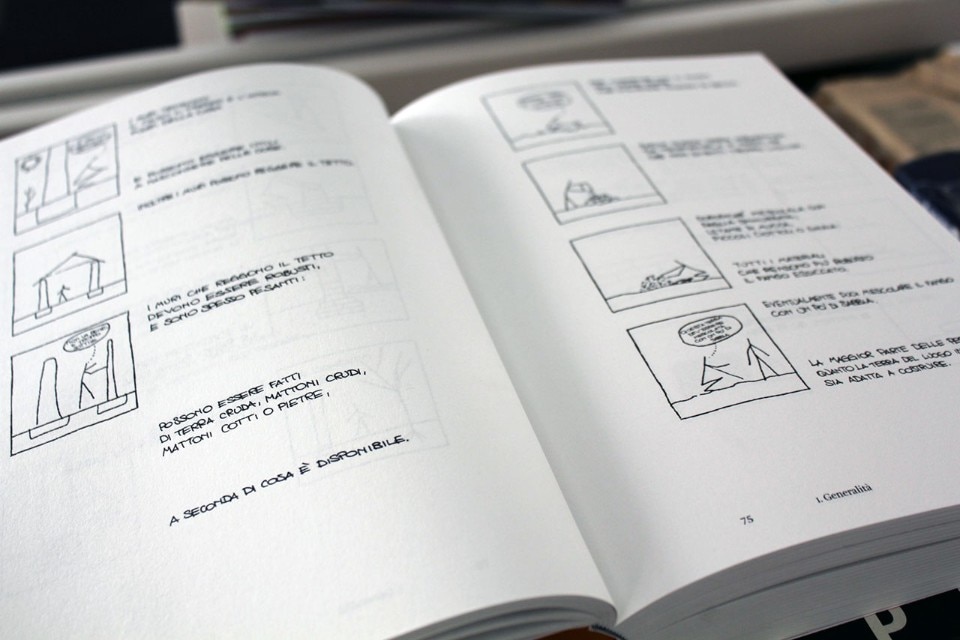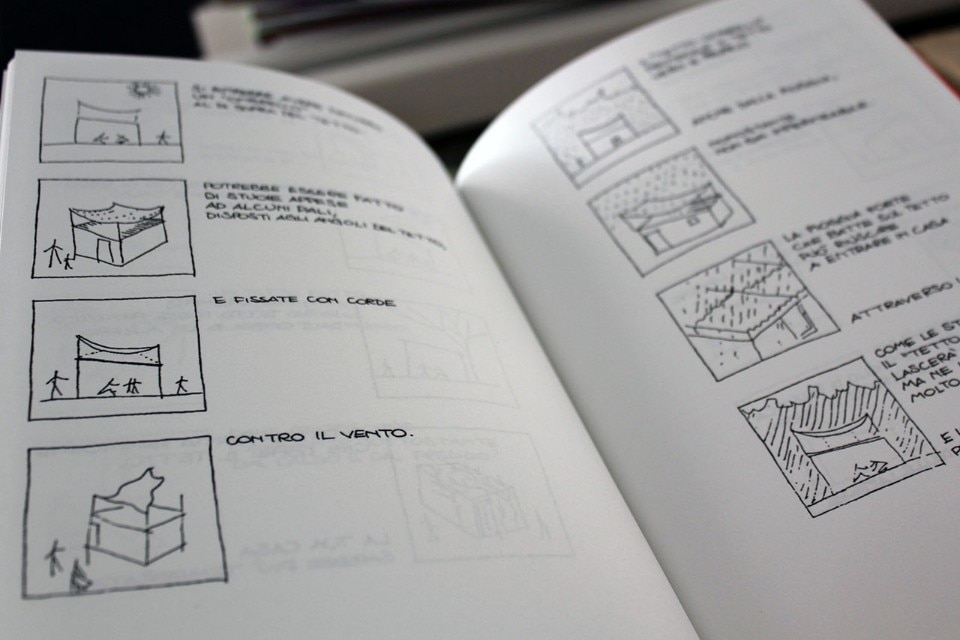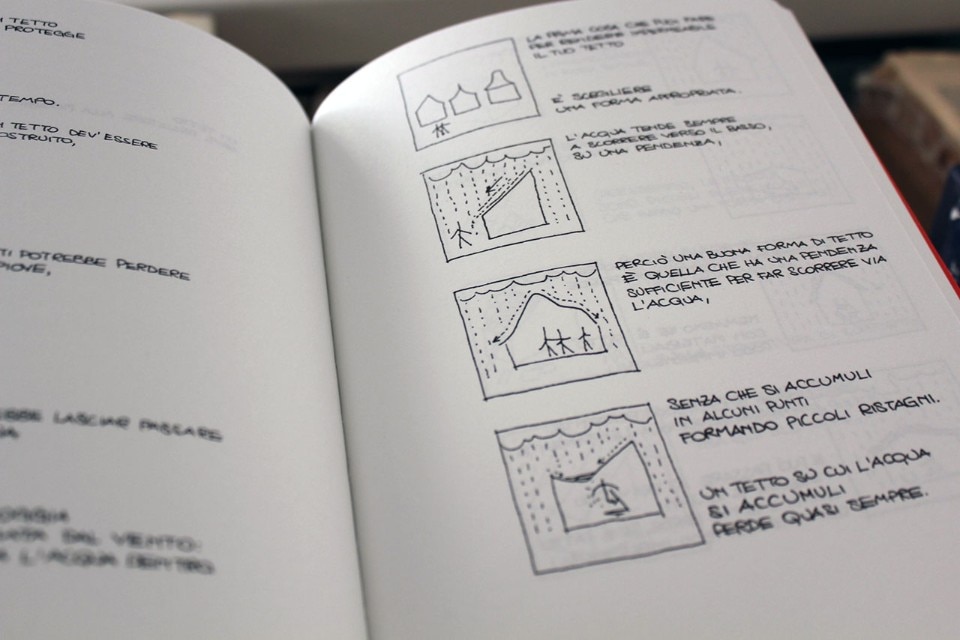A flood destroys a small village lost in the middle of a vast plain. No one is harmed. An expert, gentle man is sent by an international organisation to coordinate the rebuilding. He gathers together the village’s men and women and explains that, thanks to all their work, they can build new homes that are better than the ones destroyed. The kind man isn’t a politician; there are no experts, lawyers, engineers, or doctors. There are no building permits, tax stamps, authorisations, or documents to sign. The men and women are skilled in building solid walls. But the gentle man explains that the roof is the most important and delicate part: it must withstand many things, is vulnerable to bad weather, and it has to be insulated properly. The reeds and branches torn down by the flood are gathered, cut and assembled. They will be used to build different kinds of roofs that the village women and men may copy, with a few suggestions from the gentle man.
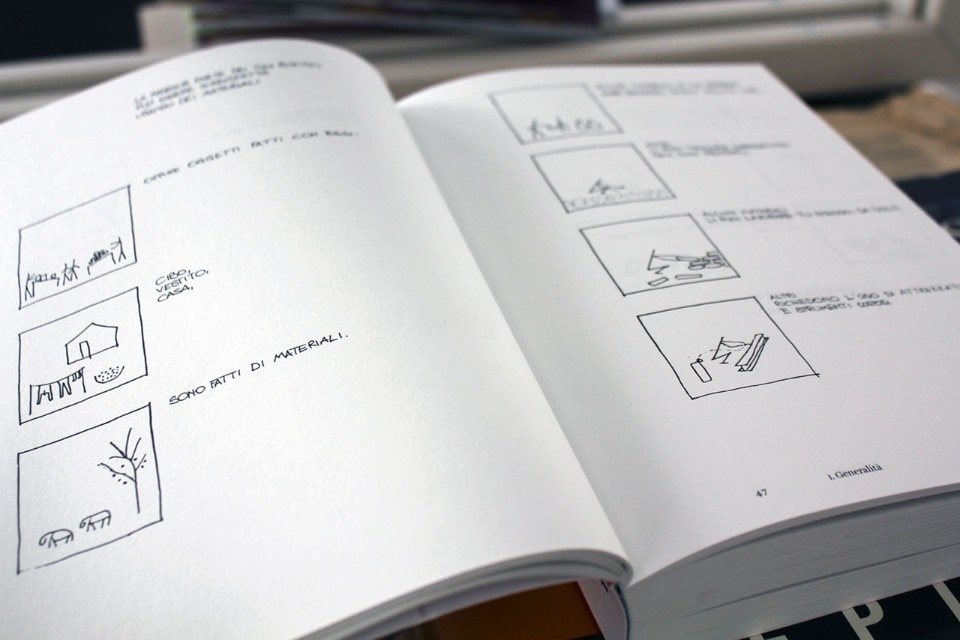
The volume Tetti gathers together over 20 manuals on a single topic, issued by UNESCO and the European Council starting in 1976, which occupied most of Yona Friedman’s career until the late 1980s. As can be inferred from the impressive essay edited by Andrea Bocco, Friedman’s manuals began in the late 1960s, when the graphic language changed, borrowed from notes on blackboards. However, it was only in February 1980 that his manuals were published in India in the magazine Invention Intelligence with the title Immediate Education for Survival. Thanks to this, Friedman got funding from the United Nations University to create posters to hang on village walls. Here, children – those few who knew how to read and write – would spread the concise instructions contained in the publication. With the success of these initiatives, the University of the United Nations – and the participation of the International Council of Scientific Unions, the scientific support of the French and Russian Academy of Sciences, and political support from India – financed the birth of the Communication Center for Scientific Knowledge for Self-Resilence (CCSK) that aimed to improve living conditions in “Developing Countries”. The headquarters would be in Friedman’s home in Paris, where he himself was coordinator with Eda Schaur as vice-coordinator.
